Artnet News Pro
Revealed: The Biggest Consignors to London’s $209 Million October Sales, From a Major London Dealer to an Art World Party-Goer
In an uncertain market, a number of high profile collectors are using this week's sales to clean house.
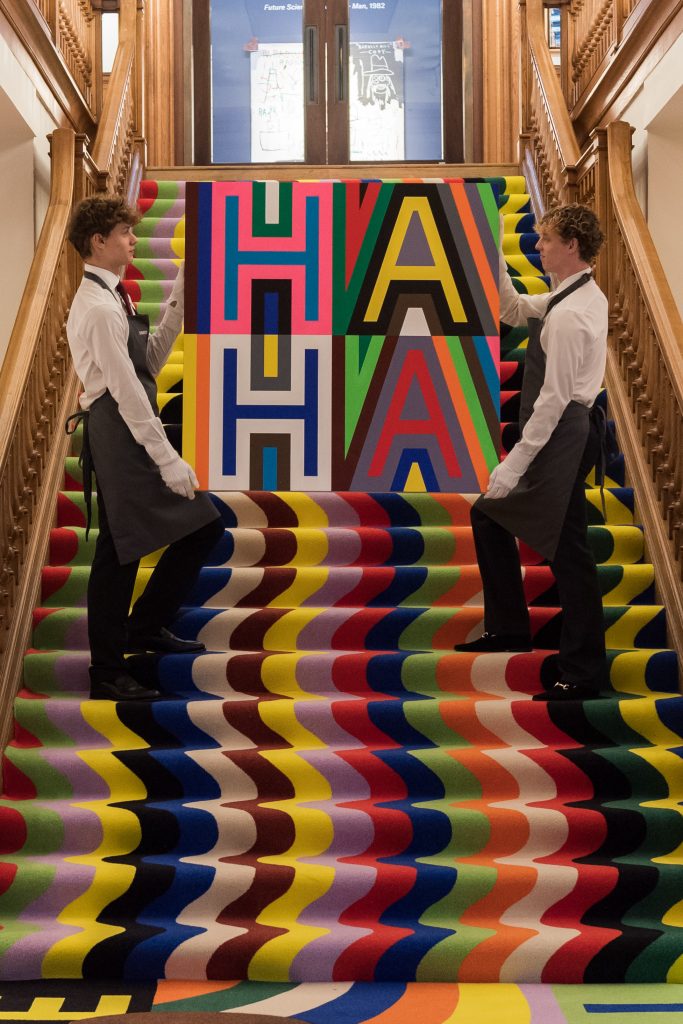
In an uncertain market, a number of high profile collectors are using this week's sales to clean house.

Colin Gleadell

London’s Frieze week auctions at Sotheby’s, Christie’s and Phillips have a combined pre-sale estimate of £178 million – £240 million ($217.4 million – $293 million), only a fraction below last year’s estimate, but a hefty 40 percent below the heady pre-Brexit Frieze week of 2017.
While New York has been trumpeting a series of well stocked collections for sale in November, and Paris announcing more than their usual fare, London has been pretty quiet—the main focus being on the broad-based connoisseur, Sam Josefowitz’s collection—and that is being split between London and Paris, though the most valuable section will be in London. Other major collection announcements have been thin on the ground.
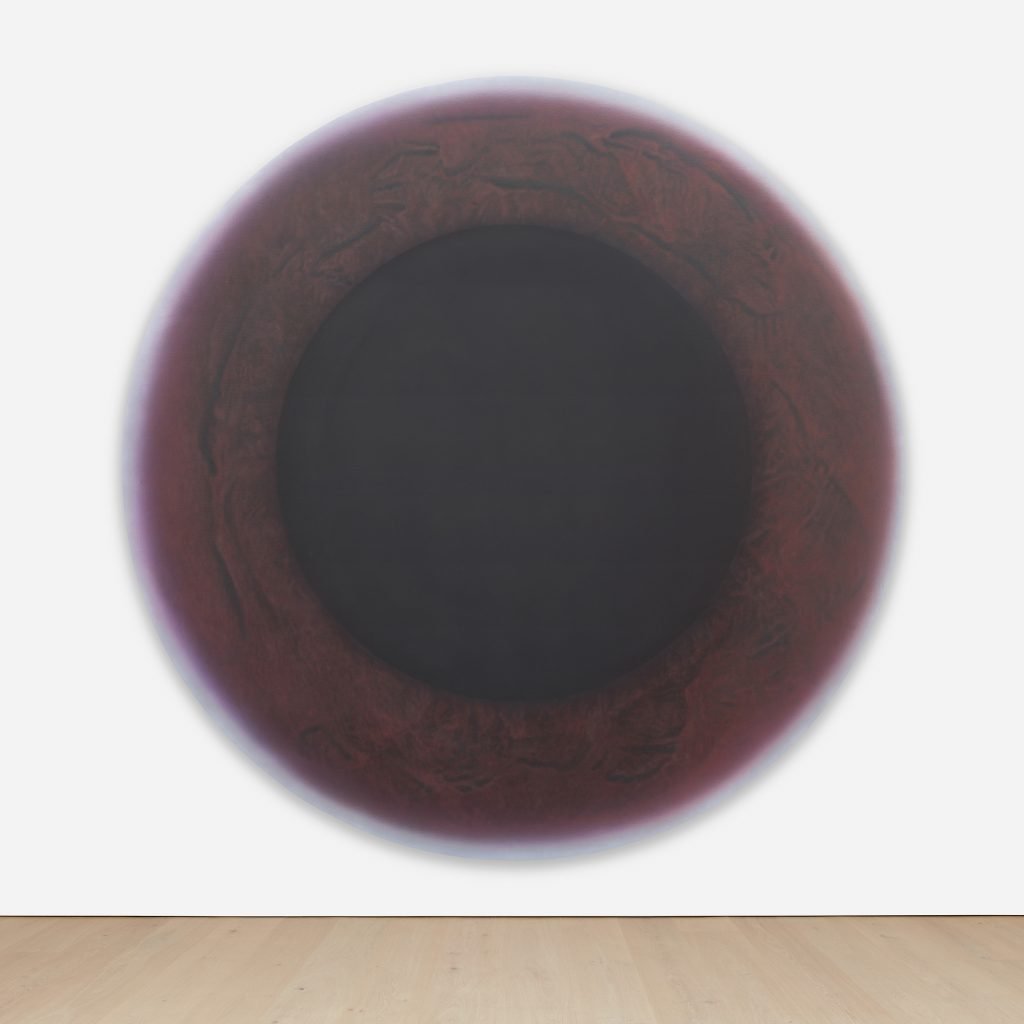
Property from the collection of Jenny Bastet. Marc Quinn, We Share Our Chemistry With The Stars (2017). Estimate £30,000 – 50,000. Image courtesy of Phillips.
Visible in the catalogue are works from Doris Ammann, the Sam Josefowitz estate—a surprising Tony Cragg bought the year the collector died—and a handful of contemporary works from Liu Yiqian and Wang Wei’s Long Museum in Shanghai, begging the question whether these works by Thomas Ruff, Angel Otero and Mamma Andersson can do better than the higher profile works by Modigliani, Magritte, and Foujita sold—or didn’t—in Hong Kong at the beginning of the month? One for the gossip columnist is a painting of an eclipse at Phillips (lot 204) by Marc Quinn sent for sale by his former girlfriend, Jenny Bastet, who took him to task for exploiting her body to make sculptures that she called “a symbol of objectification, greed and power.” The painting should net her between £30,000 and £50,000.
In addition, Artnet can offer the following insights into the Frieze week auction consignors.
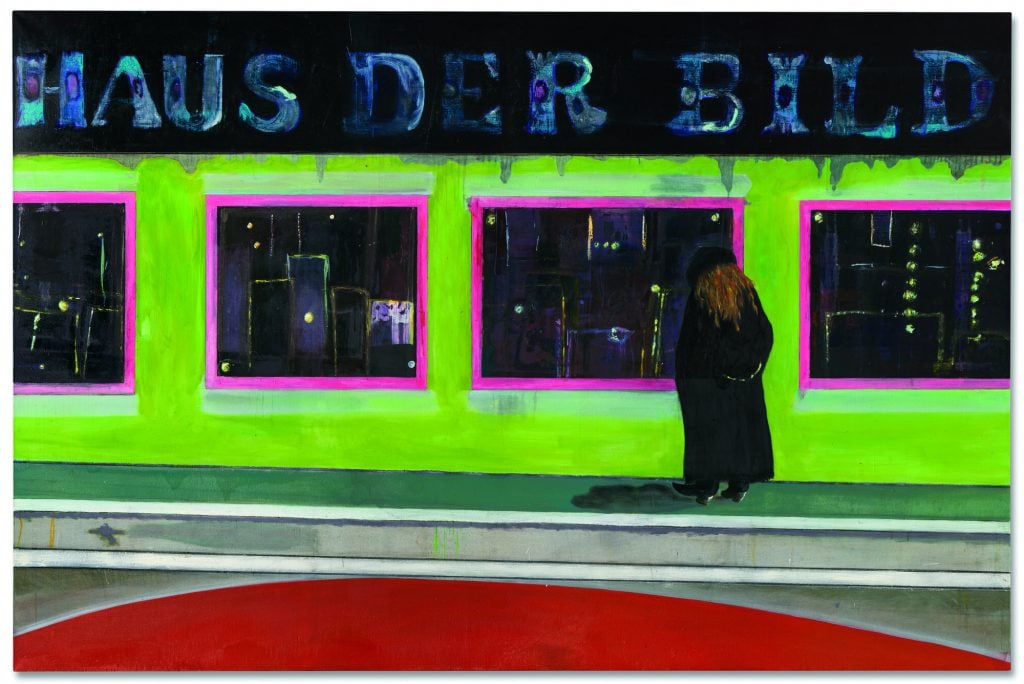
Peter Doig, House of Pictures (Haus der Bilder) (2000-2002). Estimate: GBP 5,000,000 – GBP 7,000,000. Image courtesy Christie’s Images Limited 2023.
One of the top lots of the week is Peter Doig’s almost 10-foot-wide House of Pictures (2000/2002), from an “Eminent Private Collector” at Christie’s (lot 14; estimate £5 million – £7 million). Bought from Victoria Miro in the year it was completed by U.S. collector David Teiger, it was sold in the Teiger collection sale at Sotheby’s New York in November 2018 for $9.1 million and has changed hands since.
Until last week it was visible on the website of Danish billionaire Jens Faurschou’s foundation so was presumably consigned by him. Since then, it has become one of less than a handful of works in the main sale carrying a third-party guarantee, so technically sold, and removed from Faurschou’s website. Faurschou is better known as a buyer than a seller. A Mark Tansey from the Paul Allen collection cost him $3.7 million and a Jeff Koons Balloon Dog (Magenta) £10.1 million in London last summer. The highest profile recent sale was £1.6 million for 30 lots in July 2020 to raise funds for his exhibition programmes in his galleries in Copenhagen, Beijing, Venice and New York. But this disposal would seem to be of another order.
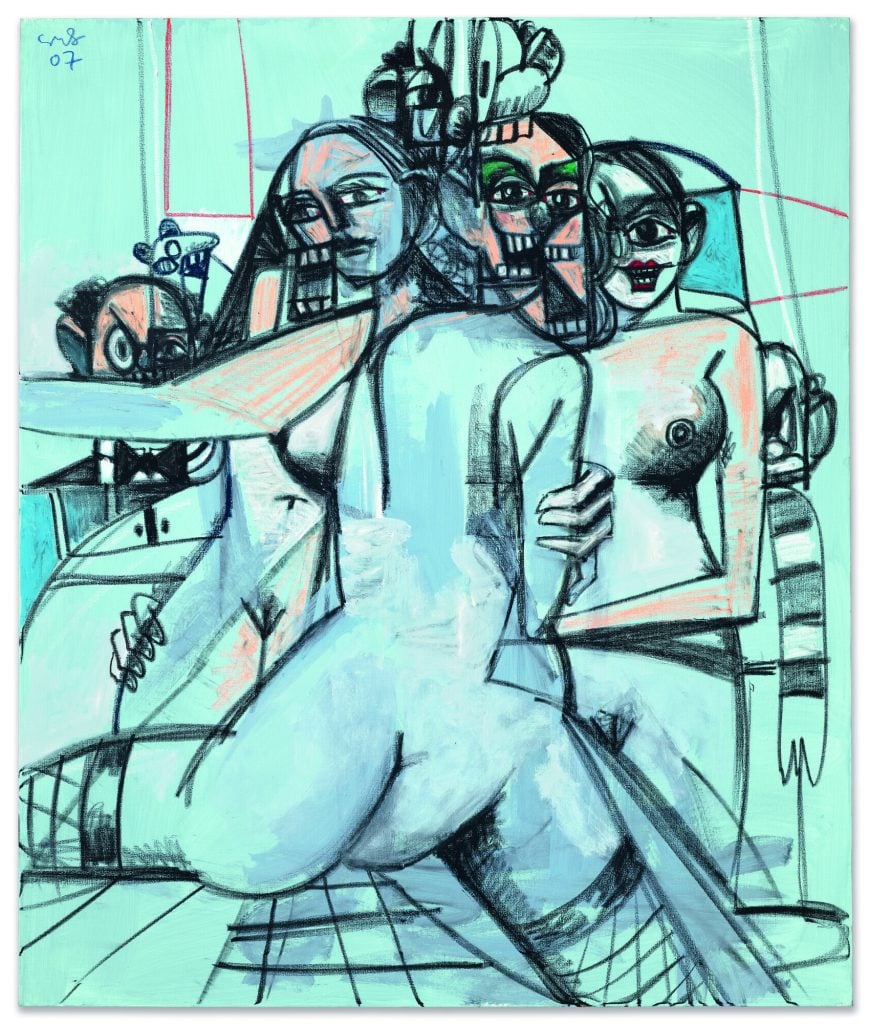
George Condo, In the Brothel (2007). Estimate: GBP 1,000,000 – GBP 1,500,000. Image courtesy Christie’s Images Limited 2023.
Korean collector Dow Kim is the unnamed seller of George Condo’s In the Brothel, (2007) (Christie’s lot 39, estimate £1 million – £1.5 million). Kim financially supports four nonprofit organizations and is a sponsor of the exhibition “Only the Young: Experimental Art in Korea, 1960s–70s” at the Solomon R. Guggenheim in New York, running now through January 7, 2024.
Recently interviewed on Artnet News, Kim has moved on from his early post-impressionist acquisitions by Chagall, Picasso et al., to more contemporary works by Lee Krasner, Yayoi Kusama, and Nicolas Party to name just a few. One of his favorites has been George Condo, who he has collected in depth. “No one paints like Condo”, he said, “and his paintings are instantly recognizable. I find him to be unparalleled in his ability to mismatch different styles, balance neo-Cubism, and layer nuanced human consciousness in his paintings. Yet he is able to seamlessly bring all these elements together in creating powerful compositions.” But with this sale perhaps he is acknowledging he has one too many or that he thinks there is a good opportunity to trade up.
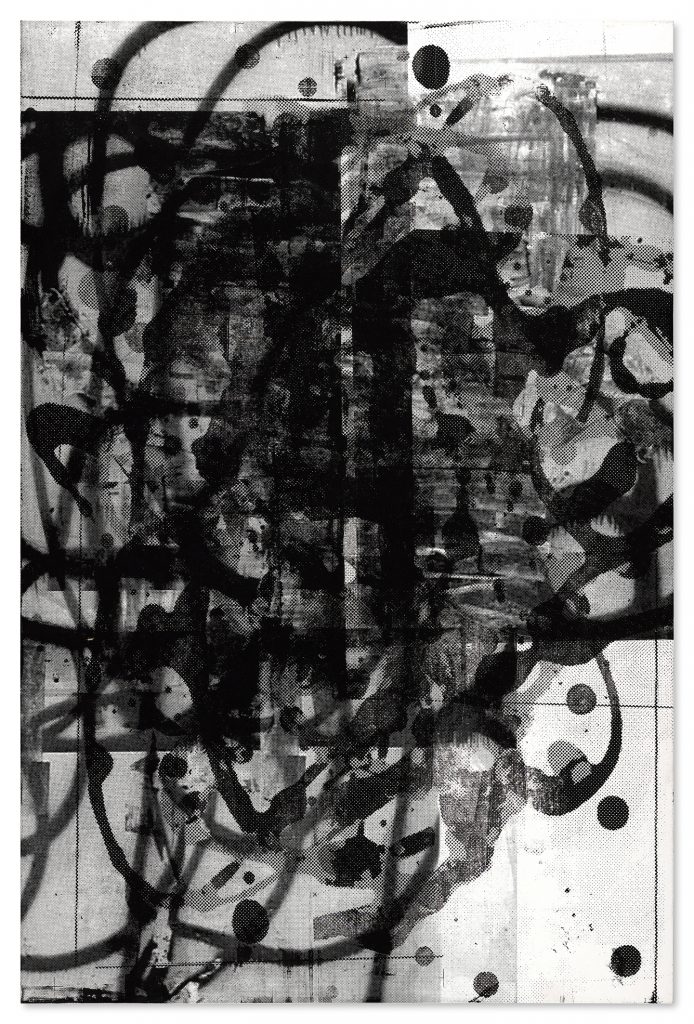
Christiopher Wool, Untitled (2001). Estimate: £1 million – £1.5 million. Courtesy Sotheby’s.
Canadian billionaire, poker player and founder of Cirque du Soleil, Guy Laliberté is a collector who has disposed of a number of works recently, managing his large collection, according to trade sources. His latest disposal is Christopher Wool’s silkscreen ink abstract Untitled (2001) (£1 million – £1.5 million, lot 119 in Sotheby’s evening sale). ARTnews, which lists Laliberté amongst its top 200 collectors, describes how he divides his time between homes in Montreal and the Spanish holiday resort, Ibiza, where he has a gallery, Lune Rouge, and owns a home previously occupied by German billionaire art collector and client of Hauser and Wirth, Mick Flick.
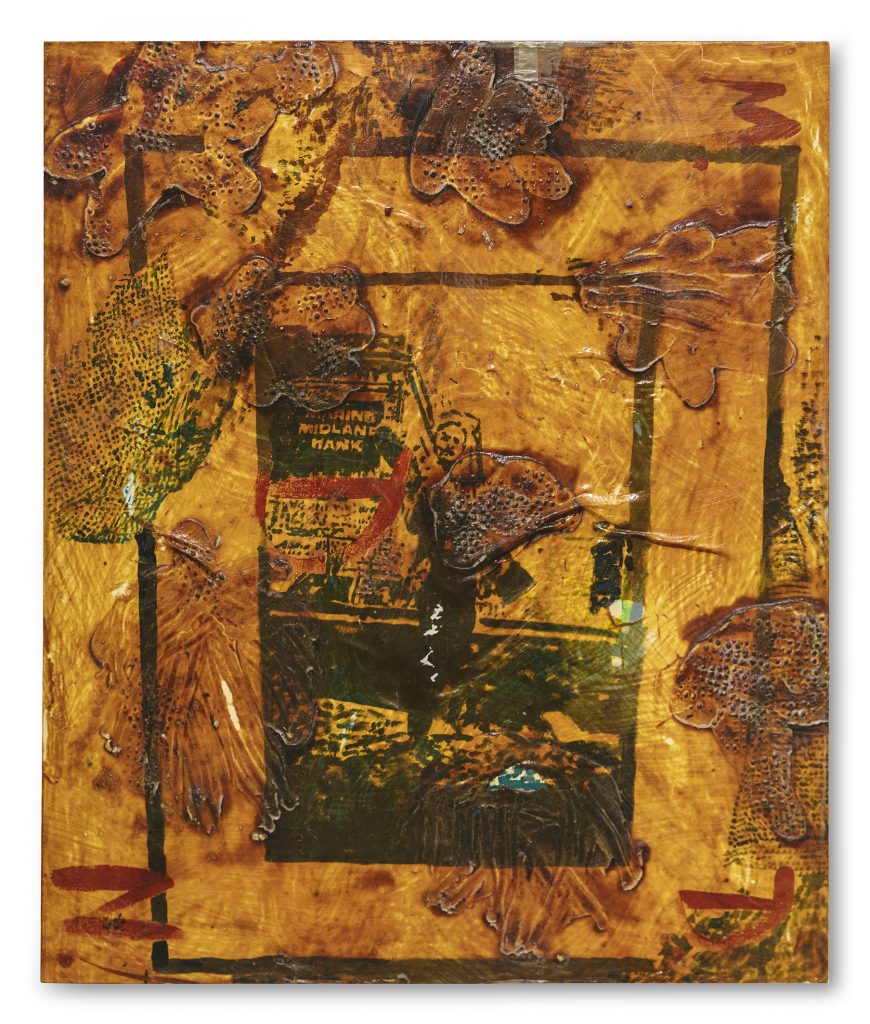
Martin Kippenberger, M.K.N.Y. (1990). Estimate: £70,000 – £100,000. Courtesy Sotheby’s.
In October 2010, a new London saleroom was launched in a converted 40,000 square foot post office designed for Phillips de Pury and Co, where chairman Simon de Pury was celebrating Phillips 210th anniversary with a pre-auction concert by the ’80’s electro pop band, The Human League. Amongst those in attendance were Miami collectors Carlos and Rosa de la Cruz on a visit to London for the Frieze Art Fair who bid on and bought works by Günther Förg and Martin Kippenberger.
They bought a Förg 1990 painting on lead for a quadruple estimate £66,000, and Kippenberger’s latex painting MKNY (1990) on the top estimate for £78,000. This week in Sotheby’s day sale, the Kippenberger is back on the block (lot 276) without any Human League fanfare and a £70,000 low estimate. The De la Cruz’ are still adding to their 1,000-plus art collection but are also said to have been disposing works from their collection lately.
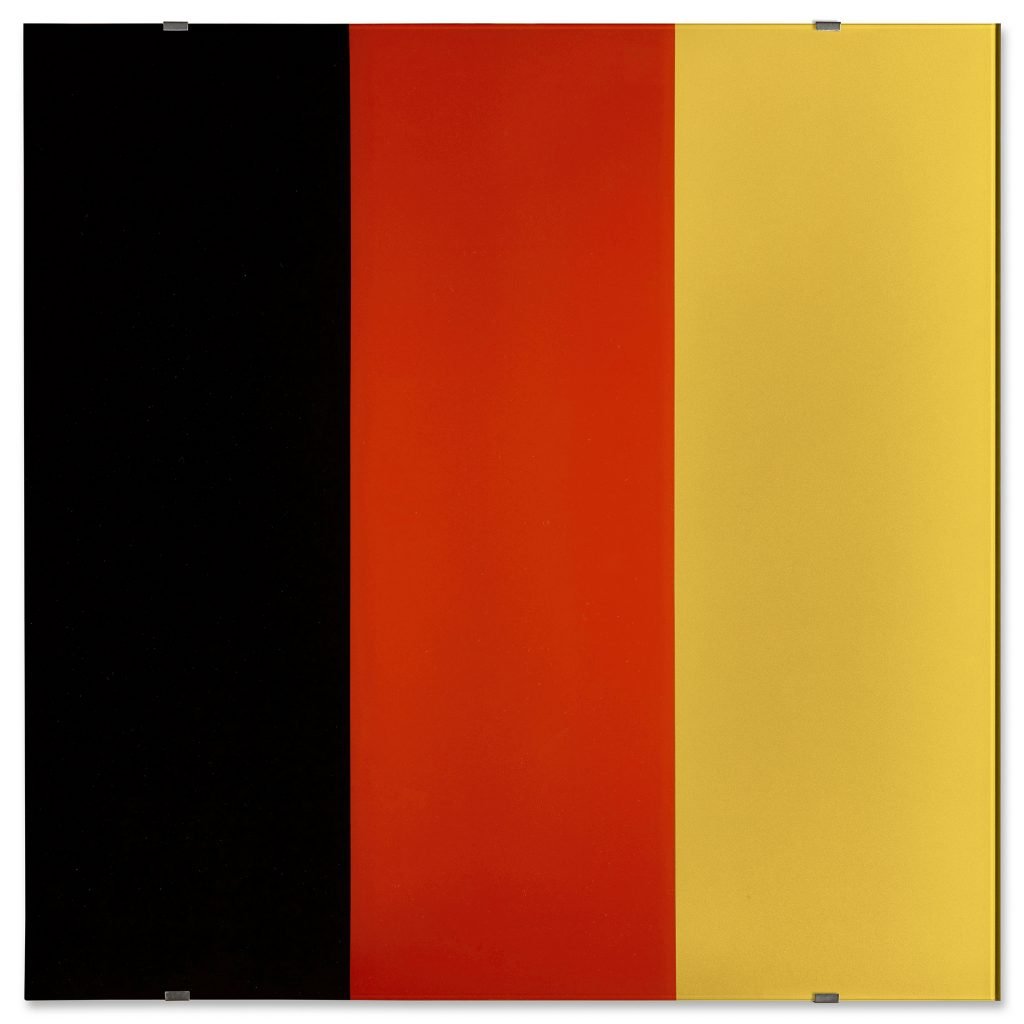
Gerhard Richter, Schwarz, Rot, Gold (1999). Estimate: £180,000 – £250,000. Image courtesy Sotheby’s.
In 2008, seven years after he officially closed his gallery down, the leading London contemporary art dealer, Anthony d’Offay announced that he was donating some 755 art works by over forty artists from his collection to the Tate and National Galleries of Scotland, jointly worth £125 million, but at cost price for a knockdown £26.5 million to him, or his business, paid for by charitable fund donations and the two respective governments.
The works would be exhibited throughout the U.K. in a programme christened Artists Rooms, and was hailed by the Daily Telegraph’s art critic Richard Dorment as: “The most important thing that has happened in the art world in this country in my lifetime.” Since then, over 50 million people have visited 195 displays in over 90 museums and galleries—all believing that everything they see in an Artist’s Rooms exhibition belongs to the nation. But does it?
At Sotheby’s this week there are three works for sale that have been included in those Artists Rooms exhibitions. Alex Katz’s Bettina (2009), (lot 213) was shown in an Artists Rooms exhibition at Tate Liverpool in 2018/19 and is on sale with a £40,000 – £60,000 estimate, and his Homage to Monet, (lot 331) also shown at the Tate Liverpool exhibition, is estimated at £20,000 – £30,000. More valuable than either is Gerhard Richter’s painting Schwarz, Rot, Gold (1999), (lot 278), shown at the Plymouth City Museum and Art Gallery in 2015 with a £180,000 – £250,000 estimate.
Sotheby’s does not indicate who is selling the works, but states that all were acquired directly from the artists by the present owner—which, as it turns out, is Anthoy d’Offay Limited, whose director, Marie-Therese Labaud, emphasizes that the works for sale were never part of the Artists’ Rooms donation, just loans to the exhibition. Nothing from the Artists Rooms donation has ever or will ever be sold, confirms Labaud.
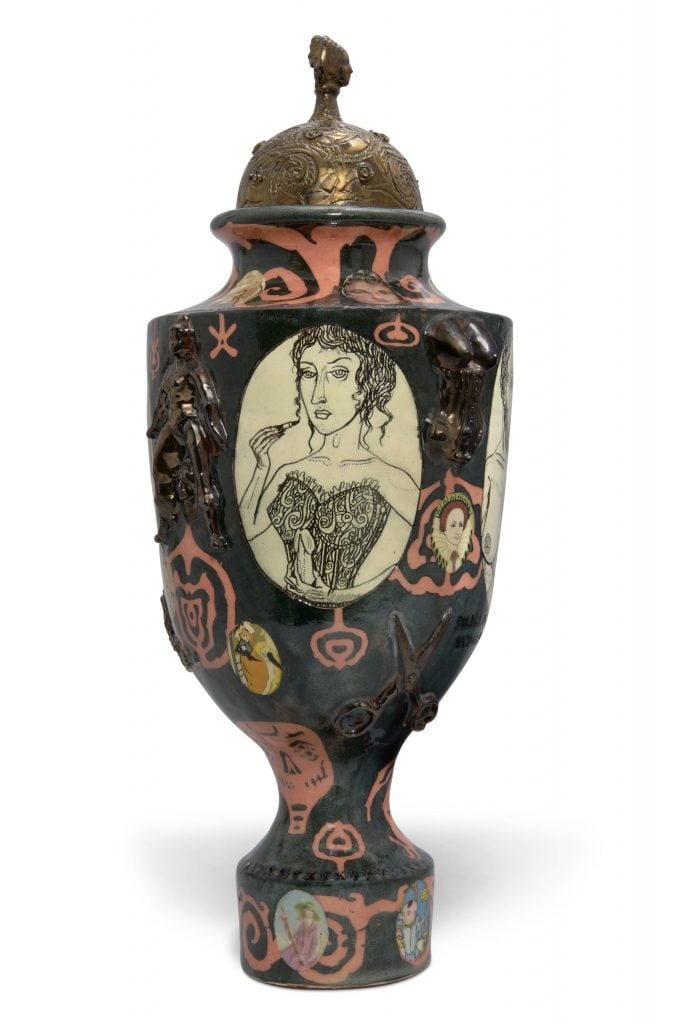
Grayson Perry, Phallic Woman (1993).
Estimate: GBP 40,000 – GBP 60,000. Courtesy Christie’s Images Limited 2023.
Grayson Perry’s Grecian urn styled glazed earthenware pot Phallic Woman (1993), (Christie’s lot 201), was initially shown at Anthony d’Offay’s gallery in 1994. In 2007, after Perry had been signed up by Victoria Miro, it was placed in a Sotheby’s sale with a £20,000–£30,000 estimate but did not sell. It did not change hands until 2011 when it was sold by Victoria Miro to a well-connected art world party goer, Siobhan Loughran.
Loughran has been photographed at numerous art events with the likes of collector Maryam Eisler, former BBC chairman, Richard Sharp, Galaxy Digital chairman Michael Daffey—who bought Jeffrey Epstein’s New York mansion—and Perry himself. In 2020 Loughran lent it to the exhibition of Perry’s early and relatively undervalued work, The Pre-Therapy Years, staged at the Holburne Museum in Bath curated by former Tate curator Chris Stephens. Here is the text which accompanied it: “This pot was a rare return to the grand vase form that interested Perry in the late 1980s. It is in line with his later style of coloured glazes combined with transfer-printed vignettes and line drawings, as well as the use of rich lustre glazes to add grandeur. Perry uses provocative sexualised imagery and subversion of gender stereotypes: the mark ‘T.V.’ (perhaps for transvestite) alongside a vignette of famously celibate Elizabeth I.” Now it is for sale again, this time at Christie’s which has neither included the text nor identified the seller but estimated it at a modest £40,000 – £60,000.
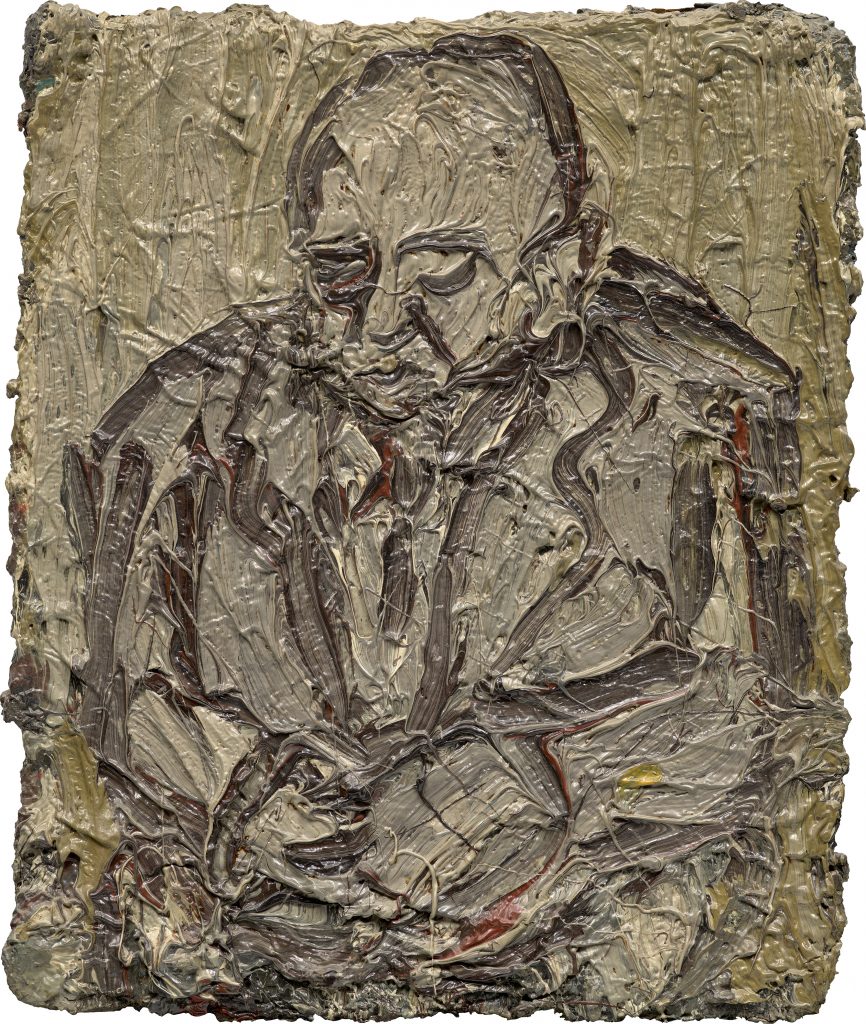
Leon Kossoff, Father Seated in an Armchair Asleep (1978). Estimate £70,000 – 100,000. Image courtesy of Phillips.
Leon Kossoff, Father Seated in an Armchair Asleep (1978), (Phillips lot 153, estimate £70,000 – £100,000). Bought from Fischer Fine Art in 1978, the year it was painted, by Diane Ackerman whose husband, Martin, was the publisher of Arts Review.
One of Marc Lagrange’s “Timeless Beauties,” Diane is a collector and advisor working between Paris and New York. She is selling to downsize her collection to make it more manageable for her children in the future. It will surely make a decent return, but that was never her objective in holding on to it for 45 years. “Back when my late husband and I started collecting art,” she told Artnet when we tracked her down, “people bought art because they loved it and wanted to live with it. Times were different then. People were committed, interested, and always reading and studying more about art, and the art they loved. Today, people buy art to make money, to flip art for profit, to get their names in the papers. It’s become a commodity for many buyers today.”
More Trending Stories: